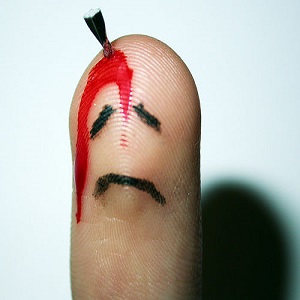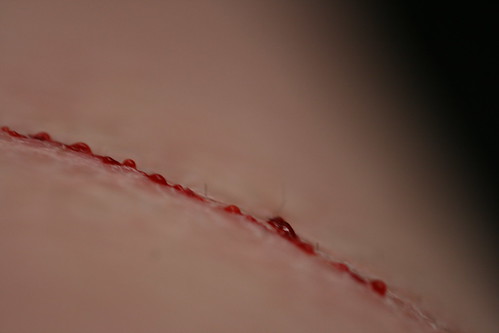World Haemophilia Day

When you injure yourself, does your injury take longer than normal to clot? If your answer is yes, you could be suffering from a bleeding disorder known as haemophilia. There is a misconception among people about this bleeding disorder, as they think people with haemophilia tend to bleed faster than non-haemophiliac. On the contrary, the bleeding rate in a haemophiliac is the same as a healthy person. Instead, the person tends to bleed for a longer time. This is because in haemophilia, the clotting factor, which is a protein in the blood responsible for controlling bleeding, is insufficient.
Understanding Haemophilia
The disease is nicknamed “royal disease, because Queen Victoria was a carrier of haemophilia and passed it on to the royal family. Haemophilia is an inherited disease, which is passed on from the mother to the male child. It is a rare disease that occurs in 1 in every 10,000 live births. In rare cases, a girl baby can be born with haemophilia. This usually happens when the mother is the carrier and the father is a haemophiliac.
Haemophilia can range from mild to severe, based on the amount of clotting factor that is missing from the affected person’s blood. Mild haemophilia causes bleeding just when the person suffers a major injury or undergoes surgery. Moderate haemophilia can result in bleeding about once a month, but this bleeding is rarely spontaneous. It can occur due to injury, dental work or surgery. Severe haemophilia causes frequent bleeding in the muscles and/or joints. It also can cause bleeding in the brain. Usually, severe haemophilia causes spontaneous bleeding at least once or twice a week.
While there is no cure for haemophilia, the disease can be controlled by infusing the clotting factor that the person is missing. This allows the person to lead a normal and healthy life.
World Haemophilia Day
As there is so much misunderstanding about the disease and many people suffering from the disease often do not seek treatment or have access to the right treatment. As a result, people with this disease often die. Hence, it is important that awareness about this condition is spread far and wide. This is done by observing World Haemophilia Day, which is celebrated throughout the world on April 17.
The day was first celebrated in 1989 in the honor of Frank Schnabel, who was the founder of the World Federation of Hemophilia. Schnabel’s birthday falls on this day and the World Hemophilia Day is supported by the World Federation of Hemophilia as a day to raise awareness about the disease. The day also is a way to increase availability of treatments for hemophilia.
World Hemophilia Day has a simple, but catchy slogan. The slogan is ‘Close the Gap’, which is an indication of the different treatments people get in different parts of the world. Many people, particularly those living in developing countries, do not get any treatment or end up with low quality treatment that endangers their lives. Also, the slogan has another meaning, wherein with the right treatment, the gap in the blood vessel is closed causing the bleeding to stop.
The World Federation of Hemophilia has been working tireless since its inception in 1963. It is a not-for-profit organization and presence in 122 countries. It is recognized by the World Health Organization (WHO). The Federation trains healthcare specialist to diagnose hemophilia properly and also manage patients with the disease. In addition, it educates and empowers patients with hemophilia to lead healthier, more productive and longer lives.
The World Federation of Hemophilia also offers resources to people who want to campaign about hemophilia and raise awareness about this disease among their communities. The posters, information and activities can be used on World Hemophilia Day or any other day.










